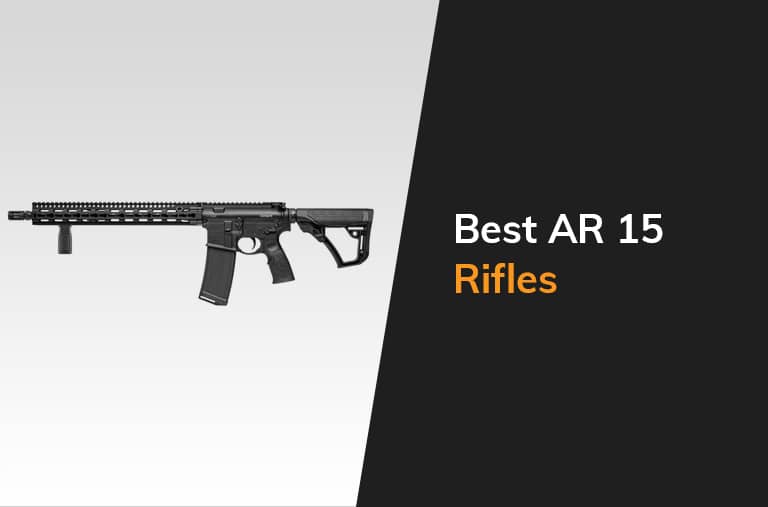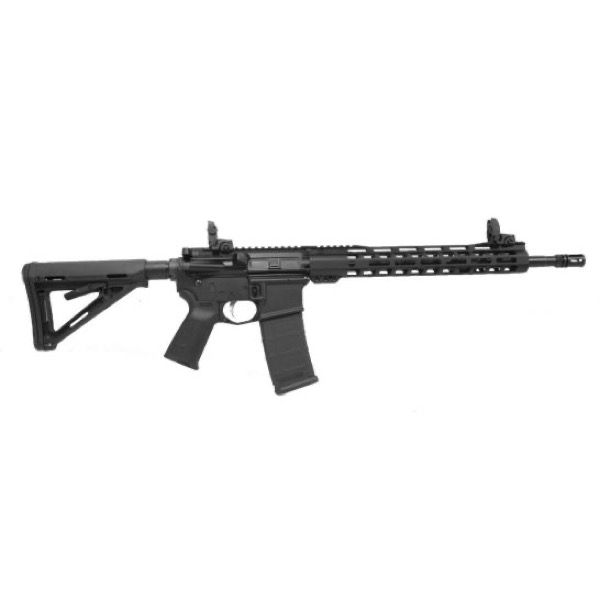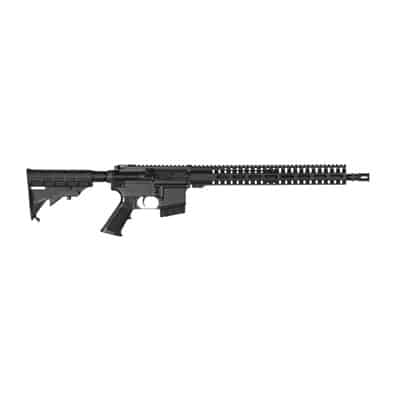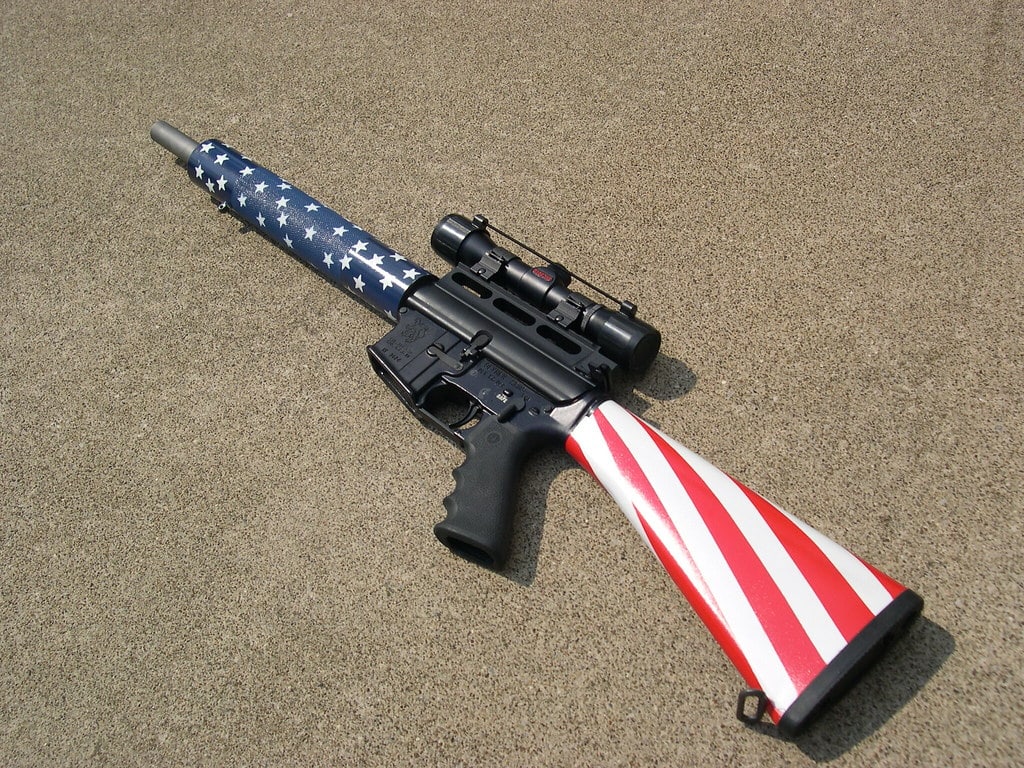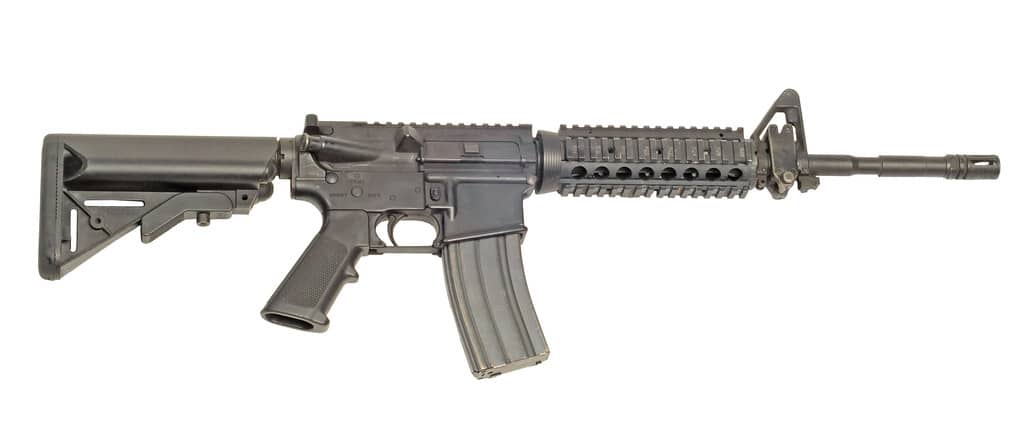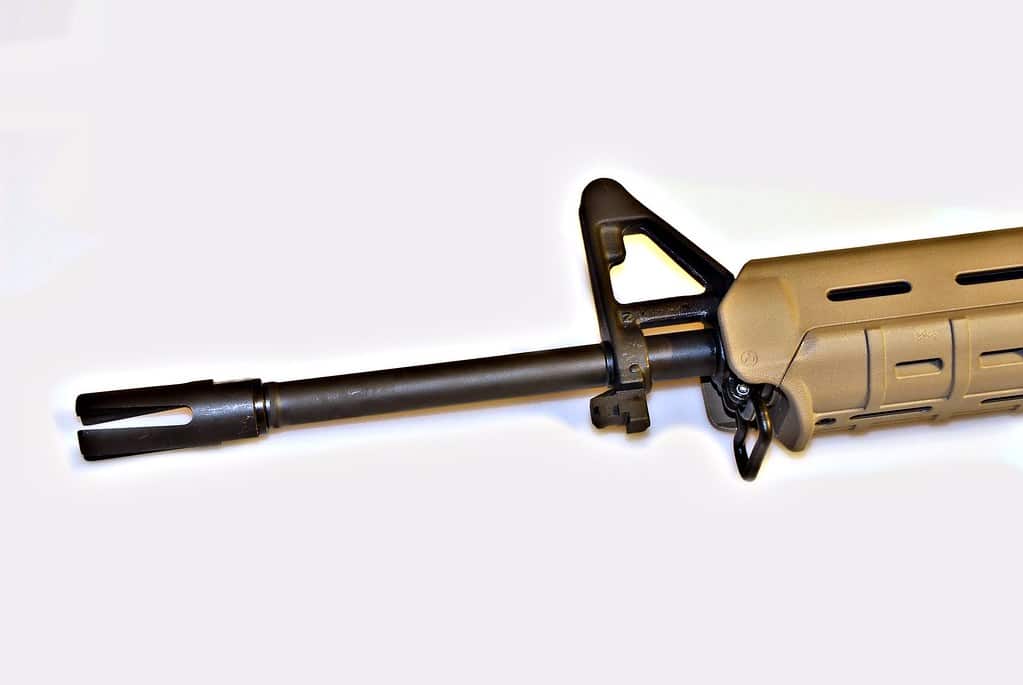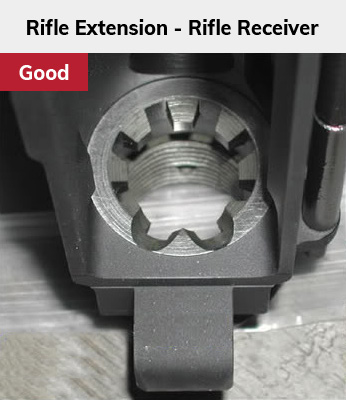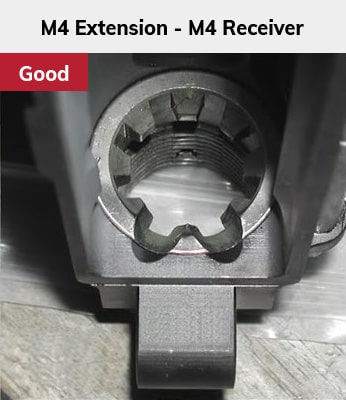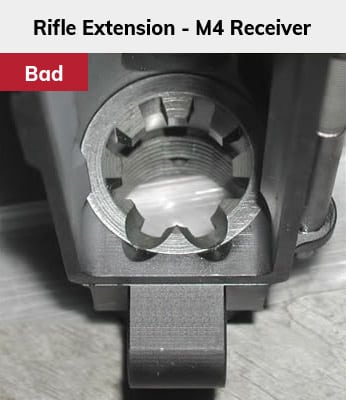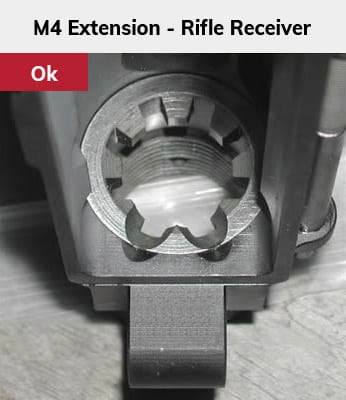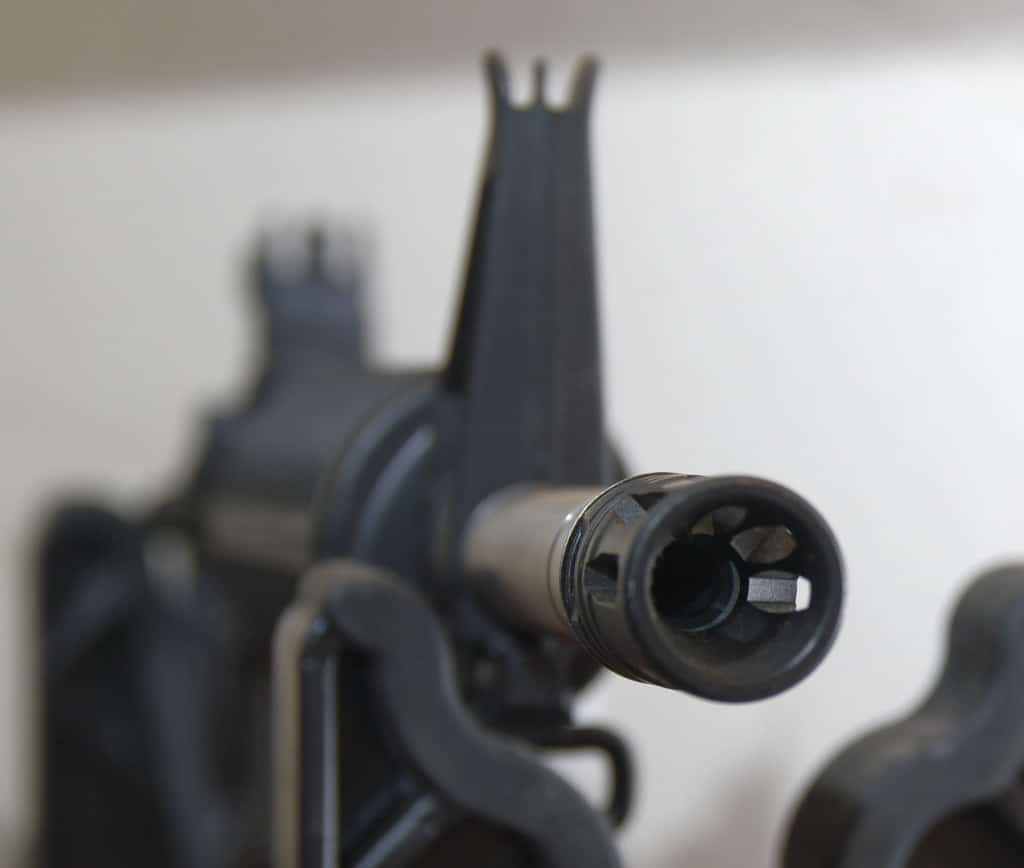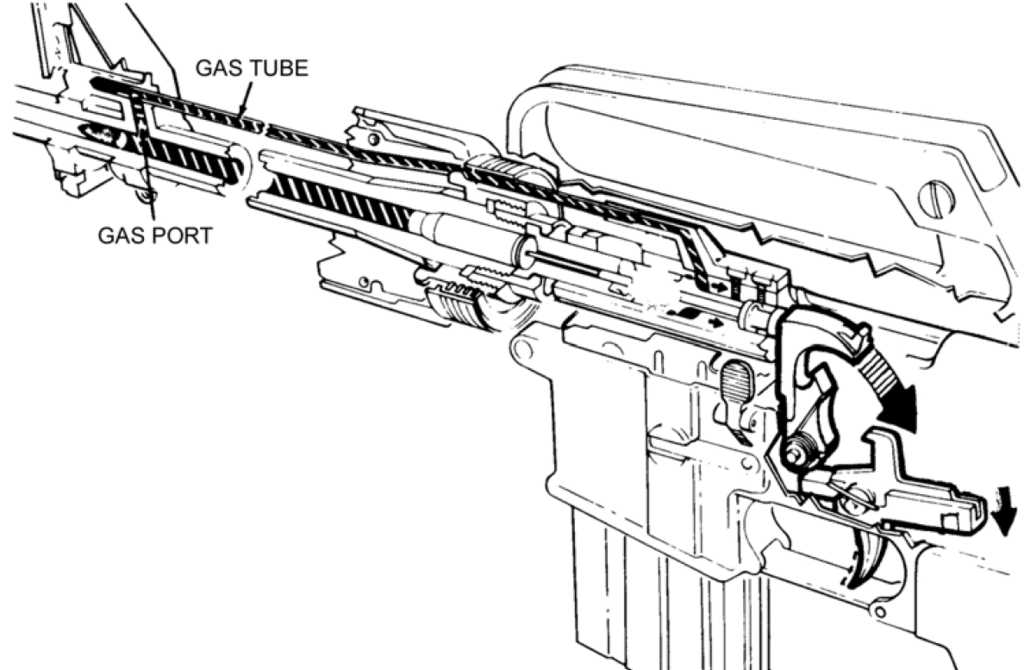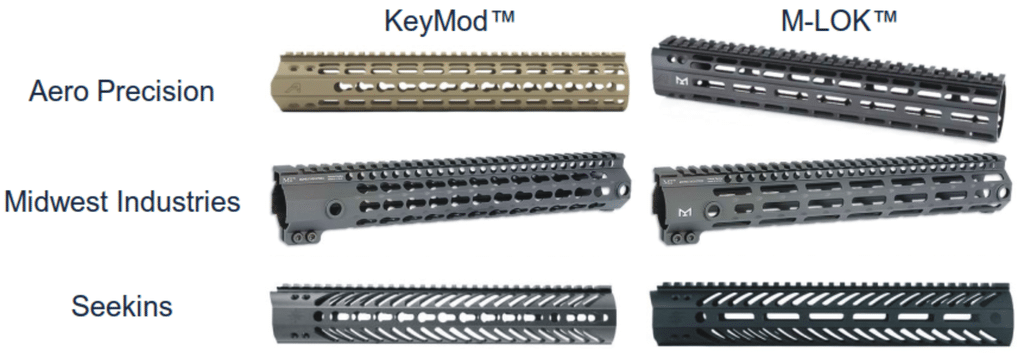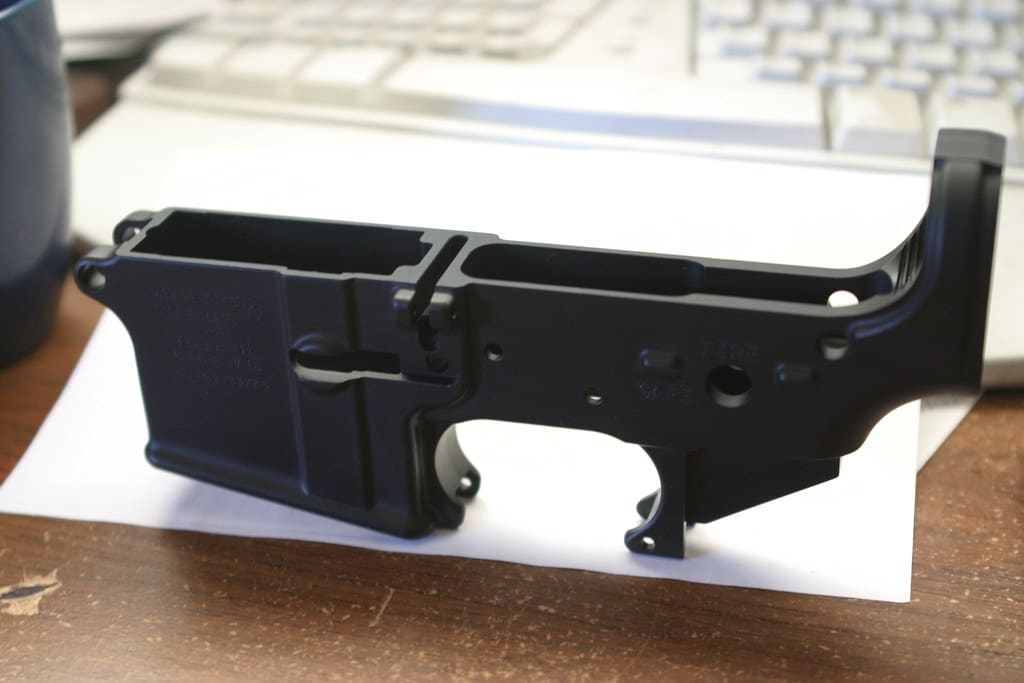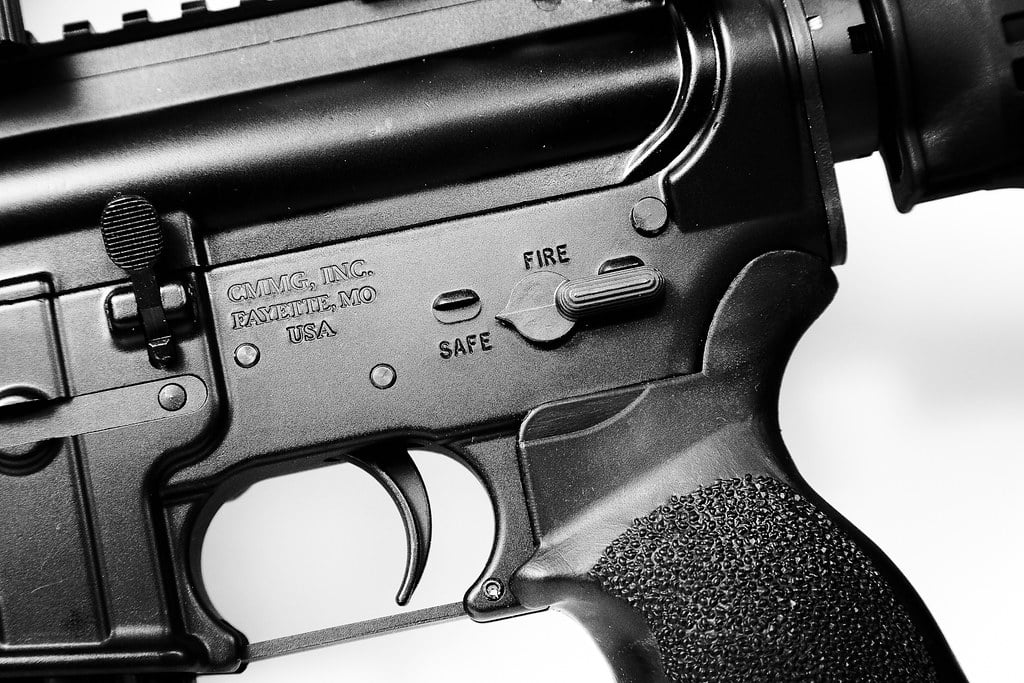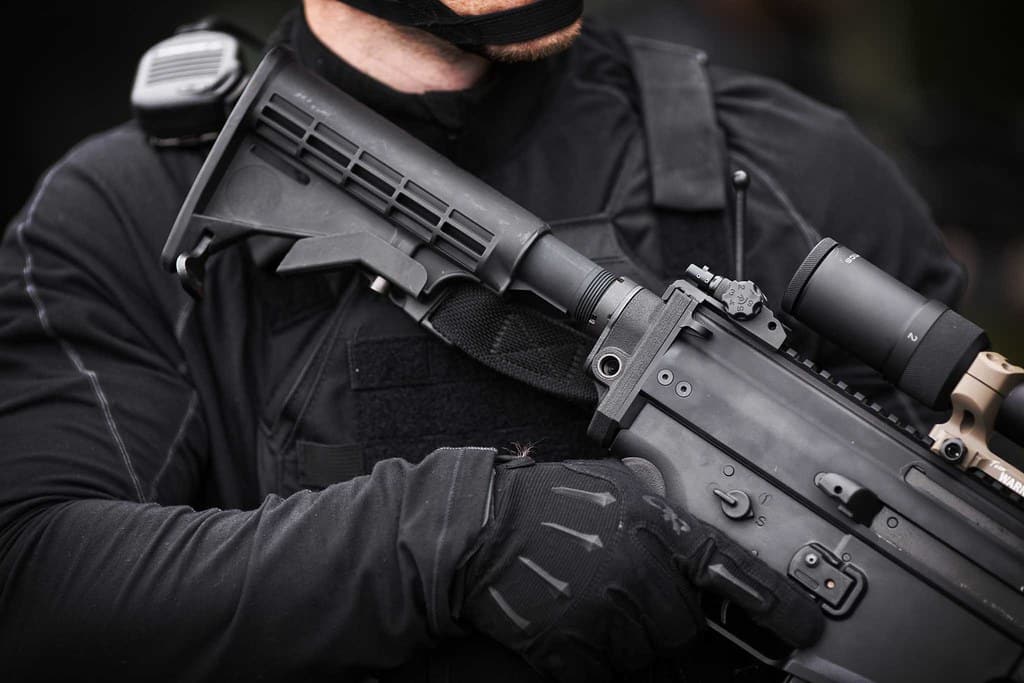At a Glance: Our Top Picks for Best AR 15 Rifles
- OUR TOP PICK: Daniel Defense DDM4 V7
- RUNNER UP: Palmetto State Armory (PSA) PA-15 16″ Mid-Length
- BEST BUDGET OPTION: Ruger AR-556 MPR
Comparison Chart of the Best AR 15 Rifle
| PRODUCT | DETAILS | ||
|---|---|---|---|
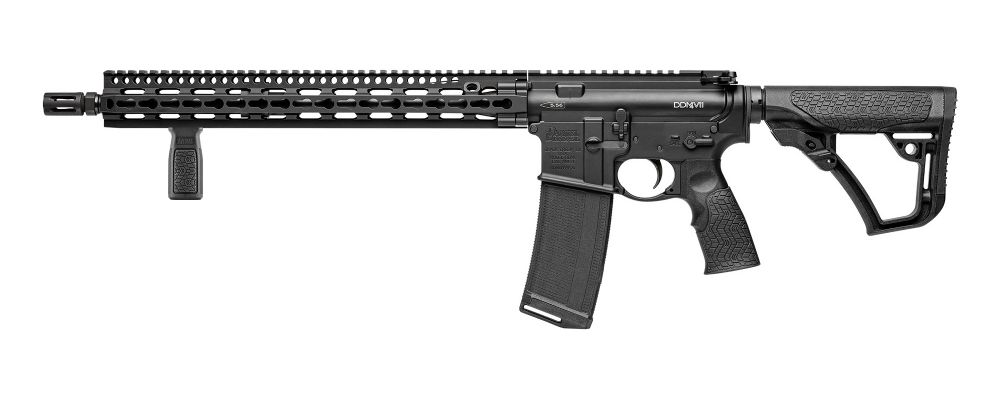
Our Top Pick
|
Daniel Defense DDM4 V7 |
|
View Latest Price |
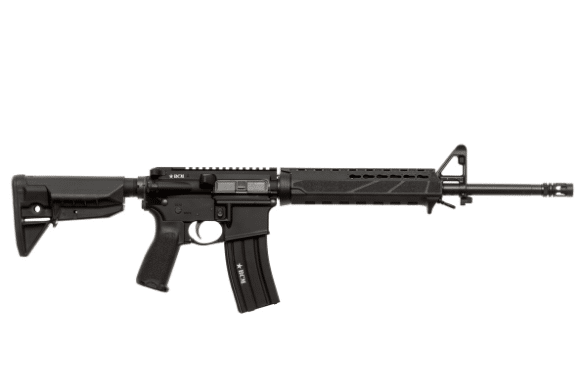
Runner Up
|
Bravo Company Mid-16 |
|
View Latest Price |
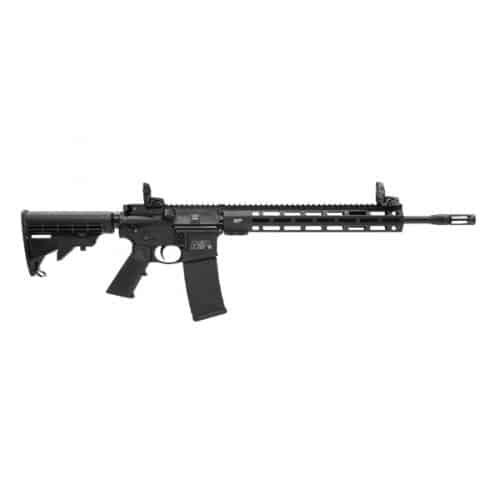
Best Under $800
|
Smith & Wesson M&P15T |
|
View Latest Price |

Best for Home Defense
|
Ruger AR-556 |
|
View Latest Price |
Benefits of the AR-15
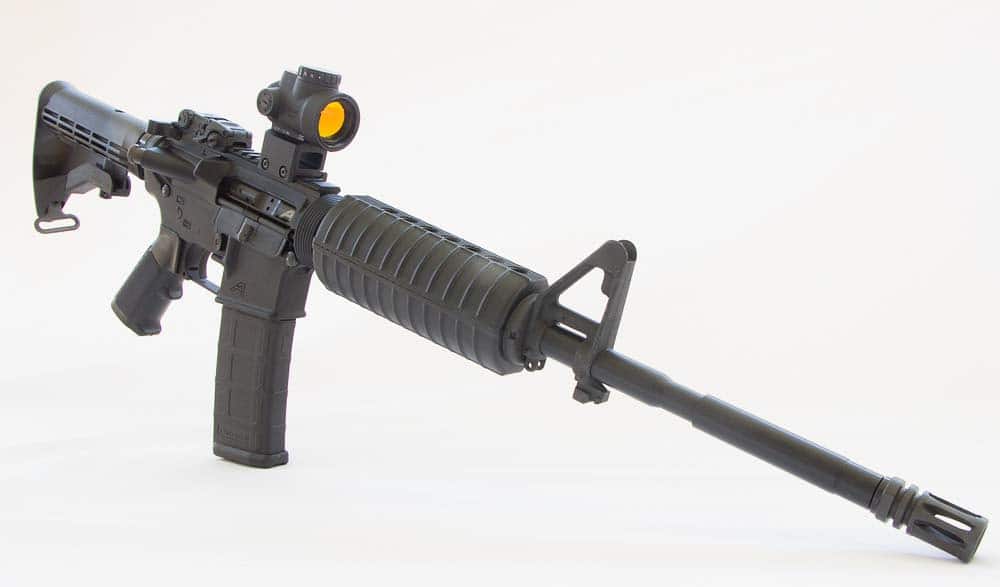
It’s America’s most popular rifle for a reason. Not only is it a symbol of everything this country stands for, but it is also an unsurpassed miracle of engineering. Sure, a Kalashnikov can be hewn together by hand out of iron ore and scrap wood by a caveman in the Khyber Pass. And yes, it will run forever, but not with anywhere near the accuracy and comfort of the equally-if-not-more reliable AR15. Some of the key benefits of the AR 15 that make it a world-beater are its
- versatility
- modularity
- customizability
- 60 years of combat-proven reliability
Most applications faced by the US military today are covered by an AR-variant, from close-quarter combat to long-distance marksmanship. For the civilian, that translates to the ideal self-defense rifle.
The broad crossover between combat rifles and varmint hunting rifles is a bit disconcerting when you think about it, but truth be told there is no better varmint rifle on Earth than an AR 15. The wide variety of cartridge options for the platform make it perfect for hunting everything from squirrels to large game.
That’s where the modularity comes in. You can have one lower receiver and a variety of upper receivers with barrels of different lengths chambered in different rounds. The serial number is on the lower receiver, so this is a good way to set yourself up for different shooting scenarios while skipping some bureaucratic headaches. Just pop out two retaining pins, slip in your new upper, replace the pins and rock & roll.
If you’re a competitive shooter, you’re going to need an AR 15 for 3-gun competitions, not to mention the other types of competitions they are suited for.
Whatever type of shooting you do, you won’t find a long gun with more aftermarket options and possibilities for customization than the AR15. There are quality options out there for every budget and application. Whatever you use it for, you’ll have a hard time finding a rifle that offers lower felt recoil or greater accuracy.
The Best AR-15 Rifles on the Market
Even within the field of AR 15s, you can end up comparing apples to oranges given that different models are designed for wildly different use cases. To ensure this list isn’t populated with rifles sporting 5 or 6 figure MSRPs, value for money is factored into our calculation of what the word ‘best’ means. That strikes Colt, the classic AR manufacturer, off this list. These are examples of the best rifles as practical tools for protecting your family, putting food on the table, and maybe a medal or two on the wall.
Daniel Defense DDM4 V7
Daniel Defense was founded in Savannah, Georgia in 2001 and has quickly risen to dominate the modern sporting rifle market. These are no garden variety rifles, calling them the Cadillacs of the AR15 world is an understatement. They are the standard against which other AR 15s are measured.
The DDM4 V7 was built with a moderate, well-balanced design philosophy. It is the archetypical AR 15 but built to the highest quality standards. We’re talking 16-inch chrome-lined barrel with a 1:7 twist rate and a mid-length gas system. The barrel is made of top-grade Carpenter 158 steel, shot-peened and rigorously tested. The rifle weighs in at an enviable 6.28 pounds. The tolerances on this thing are next level. One nice touch is that the rifle comes with various quick-detach sling attachment points. The thing that jumps out the most when you first handle the V11 is probably the incredibly comfortable pistol grip. It’s as if your hand was made to hold it. Besides, the V11 looks as bad as all hell with its long free-float handguard and sleek adjustable stock. The handguard has acres of KeyMod attachment points. The rifle ships with a popular Magpul PMAG that holds 32 rounds. The DDM4 V7 comes in a lightweight (LW) version that shaves a few grams off for easier carrying and snappier handling.
Pros
- Outstanding fit and finish
- Very light
- Comes with a full-latch case
- Soft touch grip
Cons
- High price
- No sights included
- Twist rate too fast for most civilian rounds
Bravo Company Mid-16
Wisconsin’s Bravo Company is a household name among the AR 15 crowd. They produce a full range of top-quality components from muzzle devices to retaining pins. Their complete rifles are perhaps less well-known, but they offer truly outstanding value for money. These are top-tier rifles for a fair price. Like the DD option above, this rifle has a very standard layout, with a 16-inch 1:7 barrel and a mid-length gas system. That will give you a rifle that runs relatively cool and at moderate chamber pressure levels. You’re going to get a chrome-lined bore and a BCG that is both high-pressure and magnetic-particle tested.
One thing that sets Bravo Company apart is its excellent charging handles. They are a joy to use, especially under severe tactical conditions. The handguard has four rows of Picatinny rail. The adjustable stock offers 6 positions as per standard. The rifle comes with a mil-spec 30-round mag. Altogether, it weighs 6.7 pounds dry. You get all the high-quality build details you would expect, like a shot-peened BCG with grade-8 fasteners and a fully staked gas block. The feed ramps are fully M4-style. The Mid-16 looks a bit more old-school than the Daniel Defense above, but it features all the same quality details for a substantially lower price.
Pros
- Includes a BCM compensator
- QD mount points
- Outstanding quality
- Light
Cons
- Limited mounting options on the handguard
- High price
Palmetto State Armory (PSA) PA 16″ Mid-Length
Here we leap down in price range to a truly affordable weapon. PSA is a South Carolina company which, like Bravo Company, offers a huge range of AR 15 parts and accessories. A lot of their products, including this gun, can be described as ultra-affordable.
FEATURES
- Barrel Length: 16″
- Twist Rate: 1 in 7″
- Receiver Material: Forged 7075-T6
- Handguard Style: PSA 13.5″ Lightweight M-Lok Free Float Rail
- Buffer Tube: 7075 T6 Aluminum Mil-Spec Tube
The PA-15 is a workaday tool that is not as aesthetically breathtaking as a more expensive rifle, especially in the fit and finish, but it doesn’t need to be. It certainly doesn’t look bad with its flat top receiver and gnarly free-float M-LOK handguard. In terms of value for money, it is off the scales. It weighs in at a reasonable but not outstanding 7 pounds. The stock is a standard adjustable model.
Like the models above, this rifle has very run-of-the-mill specs, just with a more cost-effective build quality. The barrel is 16 inches and made of 4150V chrome moly vanadium steel. The mid-length gas system is perfect for the civilian shooter, there is little reason to go M4-length except for the aesthetics. The BCG is full-auto (although the rifle isn’t) and the fire control group is an enhanced Polished Trigger (EPT). Overall, this is ideal as a first AR 15 or as a knock-around truck gun.
Pros
- Unbelievable quality for low cost
- Comes in various layouts
- Includes an M-Lok freefloat handguard
Cons
- Mediocre fit and finish
- Twist rate too fast for most civilian rounds
- Not very light
Smith & Wesson M&P 15T II
If you need to order 400 complete AR 15s for your security company, the Smith & Wesson M&P15 should be near the top of your list. These are rifles that mean business. You don’t get one to show off, you get one to get a job done.
FEATURES
- Caliber: 5.56×45
- Barrel Length: 16″
- Overall Length: 36.9″
- Handguard: M&P MLOK Rail
- Stock: Magpul CTR
- Capacity: 30+1
- Weight: 6.7 lbs
Whatever you may think of Smith & Wesson’s reputation for build quality, fear not when it comes to the M&P15. S&W backs it up with a lifetime service policy. The basic M&P15 looks a lot like a classic, mil-spec AR-15, while the M&P 15T IIis much more up-to-date. It has a sleek M-LOK free-float handguard with industry-leading Magpul MBUS open sights already attached. The rifle weighs in at 6.7 pounds. Unlike the options listed above, the M&P 15T II has a barrel with a twist rate of 1:8, which is better for most ammo that the civilian shooter will use.
This is an outstanding option for hunting, varmint shooting, or home defense. Among the millions of AR 15s on the market, it is a great value no-brainer option for a serious, high-quality rifle that will get the job done. It very well may be the best all-round, value for money AR 15 out there.
Pros
- Includes MagPul MBUS sights
- Backed up by a lifetime service policy
- 1:8 twist rate, great for civilian use
- Great value for money
Cons
- Older style quad-rail freefloat handguard
Ruger AR-556
Like the Smith & Wesson, Ruger offers an AR-15 that, like all of its products, means business and is great value for money. This is a classically styled AR 15 with a traditional cylindrical polymer handguard and front sight base. The flat-top receiver has a Picatinny rail to which a proprietary Ruger folding rear sight has been mounted. The main thing that sets the Ruger apart from other AR 15s is its delta nut. Ruger has implemented an innovative design that makes it much easier to switch out handguards.
Most everything else about the rifle is M4 mil-spec. Unlike the models above, the AR-556 has an M4-length gas system. The exception to mil-spec conformity is the prudent choice of a barrel with a 1:8 twist rate. It is cut with M4 feed ramps. The overall weight is just under that of the M&P15T and the PSA at 6.5 pounds.
This is an affordable AR15 that is designed and built to do serious work. If you’re more of a pragmatist than a purist, the improved, proprietary delta ring design that requires no tools is a good reason to go with the Ruger over something like the S&W.
Pros
- Includes MagPul grip and stock
- Durable and reliable fire control with the single-stage trigger
- Proprietary Ruger system for tool-free handguard replacement
- Operates with 5.56 NATO or .223 Remington ammunition
Cons
- Less compatible with aftermarket parts than some other AR15s
CMMG – Resolute MK4 350 Legend Black
CMMG’s Resolute rifle offers a lineup of three tiers, Resolute 100, Resolute 200, and Resolute 300, catering to each shooter’s personal needs and allowing for extra customization. This AR15 is equipped with an aluminum RML15 M-LOK handguard and a Geissele SSA 2 stage trigger. It has a CMMG RipStock 6 position collapsible stock that offers effortless lighting-fast deployment and an endplate with ambidextrous sling loops.
The Resolute MK4 is a premium rifle from CMMG featuring a 16 inch 4140 chrome barrel with a CMMG SV muzzle brake. It is chambered in the new .350 Legend cartridge, one of the most versatile cartridges available. This makes it a great choice for a day on the range or as a home defense firearm.
The MK4 includes one 10 round proprietary steel magazine. This Resolute rifle comes with a 16-inch barrel, carbine length gas system, and is designed for balance, accuracy, and maneuverability, making it a strong contender as the best budget AR15.
Other features include an enhanced receiver extension with an Ambi sling plate, a Magpul MOE pistol grip, and a cerakote finish on the receivers and handguard. The MK4 is constructed with a 7075-T6 aluminum M4 type upper receiver and an AR15 type lower receiver.
Overall, this is a light and very short rifle, but it still supports standard field shooting positions. I found it very easy to use and maintain, and it played well with a suppressor.
Pros
- Offers 3 different models to meet shooters individual needs
- Boasts effortless fast deployment
- Very versatile AR15 – chambered in the .350 Legend cartridge
- Top-notch balance, accuracy, and maneuverability
- Constructed with high-quality materials
- Easy to use and maintain
Cons
- Least appealing option here in terms of look and design
History & Development of the AR15
In the late 1950s, the US Military was looking for a replacement for the venerable and ground-breaking M1 semi-auto battle rifle. Select fire in a caliber as robust as the M1’s .30-06 was never an option. The trend from larger caliber battle rifles to our modern, small-caliber assault rifles had begun. Besides being easier to control in full-auto, smaller and lighter rounds are easier for a soldier to carry in bulk.
ArmaLite entered Eugene Stoner’s space-age ArmaLite AR-10 battle rifle, parent design of the AR-15, but chambered in 7.62x51mm (.308), to replace the M1. Unfortunately, it was outfitted with a non-viable aluminum-steel composite barrel at his boss’s behest. The AR-10 was passed over by the military in favor of the inferior M14 battle rifle. The M14 was little more than an M1 Garand rechambered from .30-06 to 7.62x51mm with select-fire and higher cap mags. Barrel failure mid-trial on the AR-10, conservatism in procurement, and a flawed testing regime all played a part in the selection of the M14. Its 7.62 round was still quite a handful in full-auto. The M14 remained the primary infantry rifle for less than ten years before being replaced in the late 1960s by Stoner’s refinement of the AR-10, the AR-15, chambered in the modest but effective 5.56x45mm. The US military dubbed the rifle the M16. The M16’s rounds weighed about a third of the M14’s, allowing a soldier to carry more and maintain firepower longer. The use of plastics and stamped metal components made it cheap to produce.
ArmaLite was a design firm rather than a manufacturer. Production of M16s was licensed to the venerable military contractor Colt, which had produced many of the classic firearms that won the West. As the century progressed, a range of systemic problems mounted up at Colt and their military contract for M16s was terminated in the late 1980s. Today, the military contracts a range of companies to produce AR-15-style rifles.
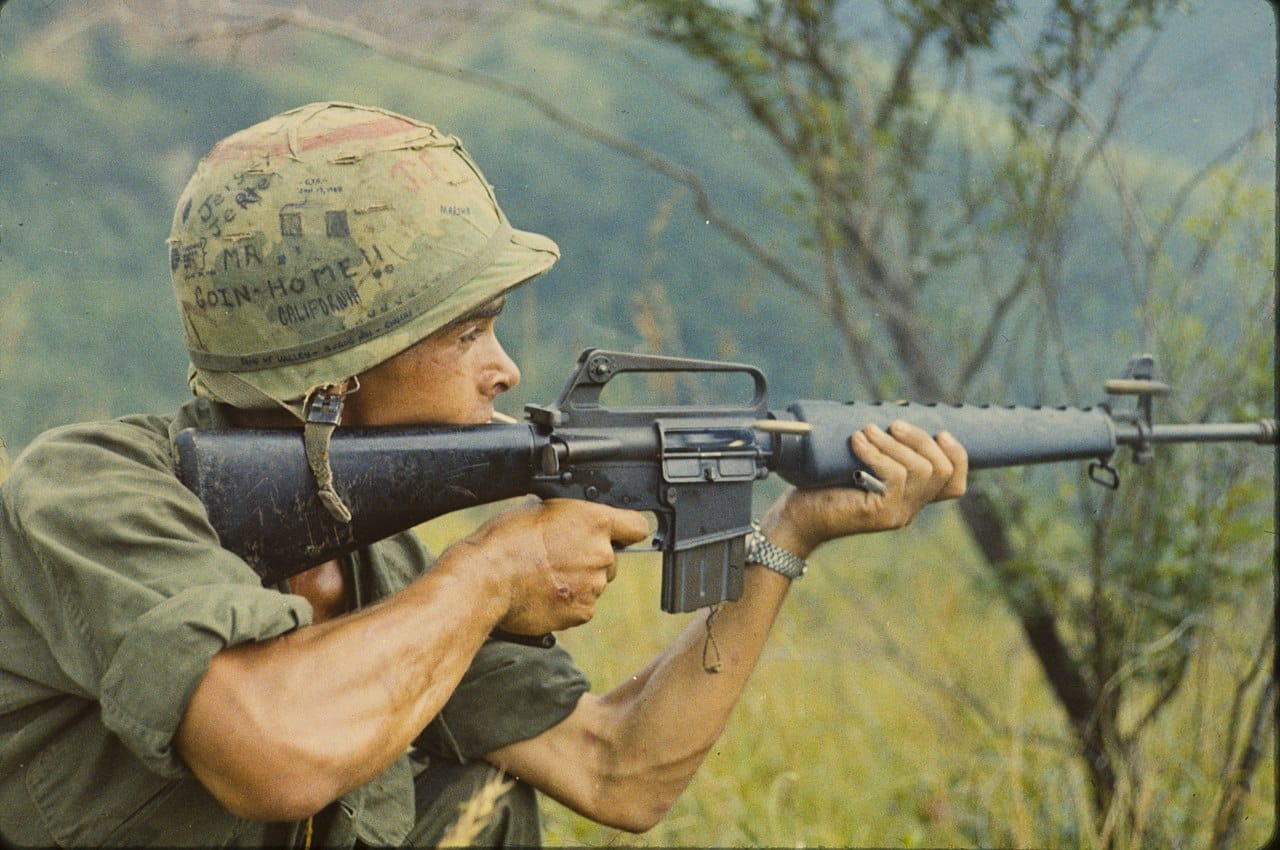
The jungles of Vietnam are not exactly machine-friendly, and it was there that the need for a forward assist on the M16 to deal with jamming was discovered. Chrome-plated chambers were also incorporated.
Before the current fad of militaries like the British moving toward ultra-maneuverable bullpup rifles, there were carbines. The US Military adopted the M4, an updated and shortened version of the M16, in 1994. Most of the AR-15s on the civilian market today are M4 clones, or ‘M-forgeries,’ except that the 14.5-inch barrel length is not legal for civilian use in many jurisdictions. If you see a US serviceman with an AR-15-style rifle today, chances are that it is an M4, not an M16. The M4 has even replaced many of the military’s submachine guns and handguns. The military bought the design of the M4 from Colt, and have subsequently contracted their production from the likes of Remington and FN Herstal.
AR-15-style firearms have been adopted by the militaries and police forces of dozens of countries. The design has also become America’s most popular civilian long gun. The options on the market and the possibilities for customization are nearly endless. Today, the term ‘modern sporting rifle’ is often used to refer to this family of weapons.
The AR-15’s General Design
Rifles in the AR-15 family are gas-operated, magazine-fed semi-automatic weapons with a rotating bolt and a straight-line recoil system. Although usually chambered in 5.56x45mm or the nearly equivalent .223, versions running everything from .22 LR to .50 Beowulf are available on the market.
The key to the AR-15’s popularity is its modular design. The rifle consists of an upper and lower receiver, which can be easily separated and swapped by removing two retaining pins. Only the lower counts as a serialized firearm, so you can get one lower and a variety of uppers, perhaps all in different calibers, without any extra red tape. The lower receiver includes the stock, buffer tube, trigger group, and mag well. The upper receiver contains the barrel, gas system, bolt carrier group, charging handle, forward assist, handguard, muzzle device, and sighting system. There is an essentially unlimited number of add-ons and options to consider for each component.
Civilian AR-15s come in semi-auto rather than select-fire and rarely have anything shorter than a 16-inch barrel. Manufacturers often tout their AR-15 variants and components as ‘mil-spec.’ This doesn’t always mean ‘best,’ as some products are marketed to civilians with more extravagant spending habits than those of the US military. One thing to keep in mind is the occasional distinction between ‘rifle’ and ‘M4’ components, particularly in terms of feed ramps and gas system lengths.
AR15 barrels
The barrel is the heart of any firearm, and barrels are designed around the cartridges they fire. A standard AR is chambered in 5.56x54mm. It will safely fire .223 rounds, but one chambered in .223 should not be used to fire 5.56, they are not quite identical. The mil-spec twist rate is 1:7, which is good for heavy military rounds like tracers. Many shooters have a knee-jerk assumption that mil-spec is good, making 1:7 ubiquitous. However, military (5.56) and civilian (.223) bullet weights are most commonly 55 grains, which is better suited to 1:9. For long-range shooting in this caliber, consider a heavier bullet and faster twist rate. If you’re going with an alternative cartridge, you’ll need to do your research to select the twist rate that suits your usual shooting scenario and bullet weight best. Too fast a twist rate can tear the jacketing off a bullet.
Things to consider when choosing an AR 15 barrel:
- Caliber
- Length
- Twist rate
- Lining
- Profile
- Gas system length accommodated
- Steel composition
- Construction and rifling methods
- Feed ramps
Common barrel lengths range from 16 inches to 20, with 16 inches the most common. In some states, you can get an M4-style 14.5-inch barrel if a 1.5-inch muzzle device is permanently welded on. Longer barrels are not necessarily more accurate. The subdued harmonics of a shorter barrel can actually make it more accurate than a longer one. Sure, in general, you can squeeze a bit more velocity out of a longer barrel. However, the main question is how much barrel length is needed to completely burn the powder before the bullet exits the muzzle. This depends on the precise make and model (or hand load) of cartridge you’re shooting. As powder technology has progressed over the years, rifle barrels, in general, have been getting shorter. Anyone who has lugged a firearm through the bush for an extended period understands the benefit of a shorter and lighter barrel and gun.
Read Next: The Best AR-15 Barrel Upgrades 2020
AR-15 barrels are designed for a gas system of a specific length. M4 style gas systems may be slightly less reliable but are popular for aesthetic reasons and mil-spec idolatry. More on gas systems later.
The key to barrel construction is workmanship, the reputation of the make and model. For most shooters, a medium contour, chrome-lined barrel in 4140 steel or chrome moly will do the trick. Mil-spec 4150 steel has 0.1 more carbon content, making it tougher, but the difference isn’t worth much of a premium. Other options include 416 SS (stainless steel) or 416 R, developed by Crucible Steel just for barrels. Stainless steel wears out quickly. The 416 R is a top-of-the-range, top-dollar barrel material.
The military chrome lines its bores to give them vastly increased durability and service lives. The downside is a minor reduction in accuracy. Imagine if roadworkers tried to lay tarmac right over a rock protruding from the road. The thickness of the tarmac over the rock would create an even larger obstacle on the road than the rock alone. The same is true with chrome lining and minor imperfections in the bore. A more recent and more costly alternative is ferritic nitrocarburizing (FNC) or nitride treatment. As a treatment rather than a lining, it arguably does not hinder accuracy. You may see it referred to as QDQ, Melonite, or Tenifer.
There are two main techniques used to manufacture AR 15 barrels. The original method is simply to lathe it down to shape and drill the bore through it. Of course, there is a lot more to it, like heat treating the barrel to a specific hardness, drilling the gas port, and adding the rifling. The main alternative to a lathed barrel is a cold-hammer-forged (CHF) one. These barrels are made by using powerful hydraulic hammers to pound steel into the proper shape around a mandrel, a rod designed with the reverse pattern of the desired rifling. The mandrel is then removed and the barrel sent for finishing. This method requires a large initial capital investment but then produces barrels quickly and cheaply. They are generally less accurate than a quality lathed barrel.
Lathed barrels either have cut rifling or button rifling. The former is the original method going back centuries. Button rifling, a WWII technology, means that a ‘button’ is forced through the bore forming the rifling as it goes. The best barrels have precision cut rifling, but cut rifling is not inherently better than button rifling or that of a CHF barrel.
AR-15 barrels come in a variety of profiles. The most common ones are M4, government, and bull. Bull barrels heat up slower and maintain accuracy better but they are a pain to lug around. M4 barrels have a little extra bulk in front of the gas block which does little for a civilian shooter other than adding a bit of stability and mil-spec tacticoolness. A medium, ‘government’ profile has a bit more bulk back around the chamber where most of the pressure is expended. The weight difference is negligible. One way to cut down on barrel weight is to go with a fluted barrel. This means that grooves are cut along the length of barrel purely to reduce weight. Don’t believe the hype about fluted barrels being stiffer or more accurate.
The last thing you need to know about AR 15 barrels is the variation in feed ramps. These are added to the barrel extension (within the receiver) to improve reliability under full-auto fire. M4 feed ramps are cut through both the barrel extension and the upper receiver, whereas the older ‘rifle’ feed ramps are cut only into the barrel extension. While feed ramps may not improve your semi-auto-only reliability at all, combining a ‘rifle-cut’ barrel extension with an M4-cut upper receiver may reduce it.
Muzzle devices for AR-15s
Muzzle device options for your AR 15 include:
- Flash suppressors—hide your muzzle flash
- Compensators—counteract muzzle rise
- Muzzle brakes—reduce felt recoil
- Thread protectors—prevent damage to your muzzle
Most AR 15 barrels are threaded to accommodate a muzzle device and most AR15s come with one, usually a birdcage flash suppressor. These are meant to prevent the people you’re shooting at from seeing where you are shooting from. They can also prevent you from blinding yourself when shooting at night. Civilian shooters may get more benefit from the other two main categories of muzzle devices, compensators, and muzzle brakes. Compensators direct gasses upwards to counteract muzzle rise. These are best used with calibers heavier than 5.56/.223 and they can be loud. Muzzle breaks reduce felt recoil by directing gasses backward. Again, standard AR 15 calibers don’t really require this. Combinations of compensators and muzzle brakes are available. Another option is my personal favorite, the thread protector.
AR 15 gas systems
If the barrel is the heart of the AR 15, the gas system is its lungs. The gas from each shot is directed through a tiny hole in the barrel and back toward the receiver to work the action. The original and most common way it does this is by direct impingement (DI). In a DI rifle, the gas travels all the way back to the bolt carrier group and dissipates within the receiver. This could eventually bung up your weapon, so piston systems have recently taken off as an alternative. The piston works the bolt carrier group so that the gas doesn’t have to, the gas exits the gas system where it meets the piston, outside of the receiver. Piston gas systems are:
- cleaner
- adjustable
- more expensive
- less interchangeable between manufacturers
- heavier upfront
- less accurate
The military uses DI, and there is about a 95% chance that it will work perfectly for you.
Gas systems come in different lengths. The shorter the system the higher the pressure it inflicts on your bolt carrier group. 16-inch barrels accommodate short, carbine-length gas systems or mid-length systems, which are almost always the better choice.
You have a variety of gas block styles to choose from. The classic option is the iconic front sight gas block. You may prefer to mount a front sight on your handguard’s rail system or you may not even want to have open sights at all. Either scenario has led to the popularity of low-profile gas blocks that can be concealed under a free-float handguard. Either variation can be standard or adjustable. Adjustable gas blocks let you fine-tune your rifle for the type of ammo you’re using, especially when you want to switch between sonic and sub-sonic rounds. All you have to do is tighten or loosen a set screw. Gas system performance will also be affected by your buffer tube.
Gas Port Pressure In AR-style Rifles
| Gas System | Peak Gas Port Pressure* |
Change in percent |
|---|---|---|
|
Rifle
Mid-length
Carbine
|
15,500 psi
21,000 psi
26,000 psi
|
0%
+35%
+68%
|
AR 15 handguards
Most shooters today are going to opt for a free-float handguard. They are more accurate, way lighter, offer miles of mounting rails and/or slots, and just look slick. You’ll have to forego the iconic front sight base, but if you want, you can mount a front sight to the end of the handguard. The length will be determined by your gas system, but 13.5 inches is most common. Picatinny top rails are still common and sometimes designed to integrate seamlessly with the top rail on the receiver. Otherwise, M-LOK is taking over as the preferred mounting system for AR handguards. KeyMod is still an option too, for now. Most free-float handguards will give you eight rows of mounting space. They’re almost always made of aluminum.
If you’re on a budget or want to go for a retro look, a non-free-float (or drop-in) handguard could be the way to go. They go great with the traditional front sight base. Most are made of polymer but often have a metal heat shield inside. They can offer as many mounting options as free-float handguards but generally offer marginally worse accuracy.
Whether you go for a complete AR-15 or build your own, a custom handguard is the quickest and easiest way to give your weapon a unique look.
AR-15 upper receivers
The upper fixes to the barrel and houses the bolt carrier group (BCG) and charging handle. The classic carrying handle with an integrated rear sight is mostly a thing of the past. On most of today’s uppers, referred to as A4-style uppers, the handle has been replaced by a top Picatinny rail to which you can add an aftermarket carrying handle, and much more, if you so desire. Instead of iron sights, you can go with a more contemporary option like an ACOG, a red dot, or a scope.
Optional upper receiver features:
- Forward assist—prevents jamming
- Dust cover—protects your rifle’s internals
- Shell deflector—keeps hot brass off your face
Uppers usually feature a forward assist, dust cover, and shell deflector, though there are options without these. The forward assist is a button facing backward at an angle that you can press to ensure your round is properly seated in the chamber. It was developed to address reliability issues faced in Vietnam but isn’t mission-critical on a modern civilian, semi-auto-only weapon.
Uppers come complete with a barrel, gas system, handguard, BCG and charging handle or come stripped for a DIY rifle build project. A stripped upper gives you the option of selecting your internals yourself. If you go that route, you’re going to need a set of tools, particularly an AR wrench.
Receiver construction method options:
- Billet—CNC cut out of a block of aluminum
- Forged—hammered into shape then CNC cut
- Cast—liquid aluminum is poured into a mold & then CNC cut
Uppers are almost always made of aluminum. I’ve never heard of one failing no matter the construction meathod, but you have three options to consider. Cast uppers are the weakest and are made by pouring liquid aluminum into a mold. Forged receivers are hammered roughly into shape, forcing the aluminum molecules into alignment, creating a very tough product. Both cast and forged receivers are CNC machined to reach their final shape. Billet receivers are simply CNC machined from a billet, or block of aluminum. Truth be told, that billet was also hammered into shape so it may be no weaker than a forged receiver.
Remember, if your upper has M4 feed ramps cut into it, do not use a barrel extension featuring ‘rifle’ feed ramps.
Bolt carrier groups for AR15s
Your AR15’s bolt is housed inside the bolt carrier and together they form the BCG. Pulling the charging handle pulls the BCG back. When you let go, the BCG springs forward, grabbing a round from the mag and seating it in the chamber. Pull the trigger and the hammer strikes the firing pin which impacts the round’s primer, firing the weapon. Some of the gas cycles back from the barrel through the gas system to push the BCG back again, resetting the hammer and, as the BCG springs forward, seating another round in the chamber. It’s a thing of beauty.
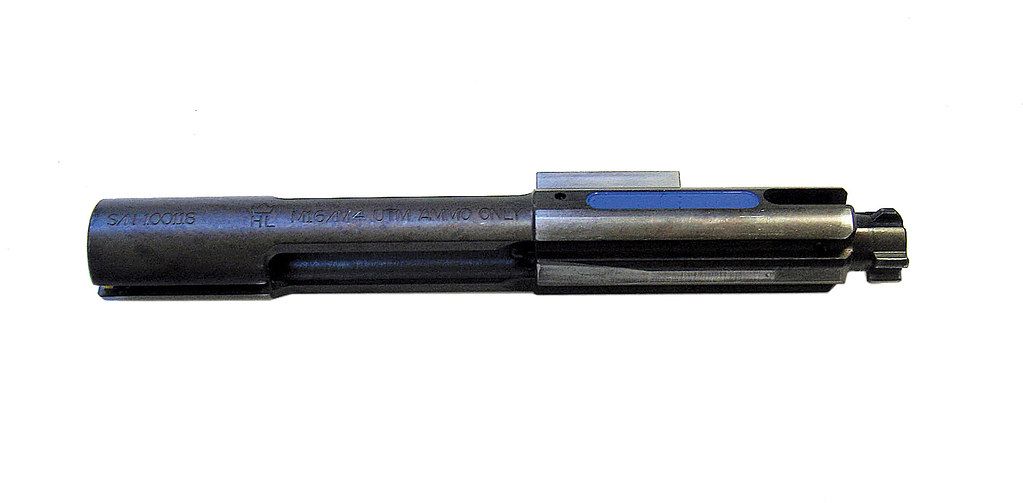
Semi-auto and full-auto BCGs are available. the full-auto ones don’t make your weapon full-auto, but they do add a bit of weight which can slow down cycling if necessary, which is usually the case. Also, firing pins in full-auto BCGs are protected by a shrowd. If in doubt, go with a full-auto BCG.
Popular steels for BCG construction, in ascending toughness:
- 8620
- 9310
- Carpenter 150
As with the barrel, the type of steel used to produce the BCG can make a difference. You’ll see steel grades like 8620, 9310, and Carpenter 158, in increasing order of toughness and price. Today, BCGs are marketed with a variety of coatings meant to improve function and reduce wear. Chrome plating is the mil-spec option, but there is a whole menu of coatings and treatments emerging, like nickel boron, nitride, and phosphate (AKA Parkerization).
Mil-spec BCGs are shot-peened to make them more resistant to fatigue.
The Arms Guide Review on The Best AR-15 Bolt Carrier Groups (BCGs) on the Market Today
AR 15 lower receivers
As mentioned above, the lower is the serialized part of your AR 15. Legally, it is the firearm, so you can own one lower with a variety of uppers, maybe in different calibers, with no extra bureaucratic wrangling. Like uppers, they are usually made of forged, billet, or cast aluminum. Polymer options also exist.
Like uppers, lowers also come complete or stripped. The latter option lets you select options like the pistol grip and the buffer tube/stock combo that works best for you.
The 5 Best AR-15 Lower Receivers in 2020 Reviewed
AR-15 Trigger Groups
The key component of a lower receiver is one of the most vital and customizable parts of the weapon, the trigger group. Upgrading your trigger group is the first thing many shooters do to their black rifles. It is one of the easiest ways to see a major jump in performance.
Types of AR 15 trigger:
- Single-stage—the classic mil-spec option
- Two-stage—light, accurate and safe
- Adjustable—can be single or two-stage
- Drop-in—easy to install, comes in all varieties
The default trigger design is the mil-spec single-stage trigger as designed by Eugene Stoner. It’s a simple and effective design that has minimal take-up, creep, and stacking, all things you don’t want. Expect a mil-spec trigger to have a pull of 7 to 8.5 pounds, a bit on the heavy side.
Two-stage triggers are designed to give you a lighter yet safe trigger pull. As you pull a two-stage, you will feel a light take-up of about 1.5 to 2 pounds. You will then feel the trigger hit a ‘wall,’ a point where it requires around 2 to 2.5 pounds of pressure to break, firing the rifle. This design reduces the probability of a negligent discharge that you would get with a very light trigger, while still giving you a light and predictable pull.
Adjustable triggers are available in single or two-stage models. They allow you to fine-tune your trigger pull, eliminating creep and stacking, which is especially useful for single-stage designs.
Drop-in trigger groups are a great, super-easy way to upgrade your weapon. They come as a pre-assembled unit that you can install with your eyes closed. Just drop it in and pin it in place. Like adjustable triggers, drop-ins can be single or two-stage. They can even be adjustable! They aren’t necessarily any worse quality than non-drop-in trigger groups, which can be a pain to install.
Consider giving your stock trigger a chance to break in before rushing to replace it.
AR-15 stocks and buffer tubes
There are a lot of stock options out there, the key distinction being between fixed and adjustable models. The benefits of an adjustable stock are obvious. Fixed stocks are best for high accuracy at longer ranges.
Your buffer tube absorbs felt recoil in a careful balance with your gas system. Customizing your buffer tube is a bit complicated. Several adjustable factors are involved in achieving a perfect balance:
- The powder load and bullet weight you are using
- The size of your gas port
- The weight of your BCG
- The weight of your buffer
- The strength of your buffer spring
If you don’t have an adjustable gas block, the buffer tube is the only place you can tune your rifle for optimum recoil. Either way, tuning your rifle takes time and experimentation.
Buy a complete AR15 or build your own?
In the buffer tube section above, we listed the factors you need to consider when tuning your AR 15. It is a bit complicated and serves as a good argument for going with a quality complete from a well-established manufacturer for your first black rifle. That will give you a chance to get a feel for the system, to get to know what you like and dislike, and will help you prioritize customization options.
Today, you face an equally broad price range for completes and custom builds; one category isn’t inherently cheaper than the other. If you like to tinker, have or are ready to invest in the necessary tools, and are particularly discerning in your component choices, by all means, go for a custom build.
Staff quick picks
There is a lot to consider when choosing an AR 15. There is no ultimate black rifle, at the end of the day, you have to choose what’s best for you. If you choose to build your own, you will need a set of tools and the willingness to tinker around, balancing your cartridge loads, gas system, and buffer tube. If you want a high-end AR-15 that will run like a dream, go with the Daniel Defense or the Bravo Company. If you want a solid, dependable rifle that offers unreal quality for the price, go with the PSA. For a middle-of-the-road tool to get the job done, the Smith & Wesson or the Ruger are unbeatable options. Whatever you choose, have fun, learn, practice, and get ready to get addicted to the world of AR 15s.

